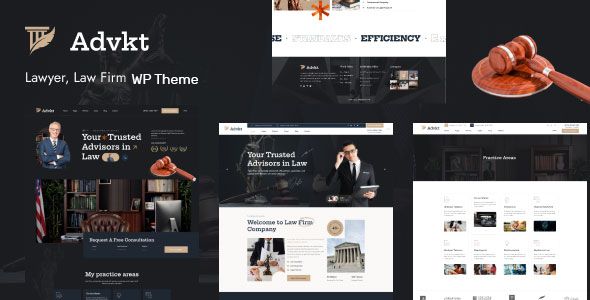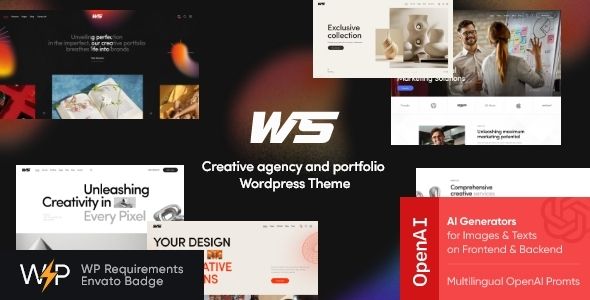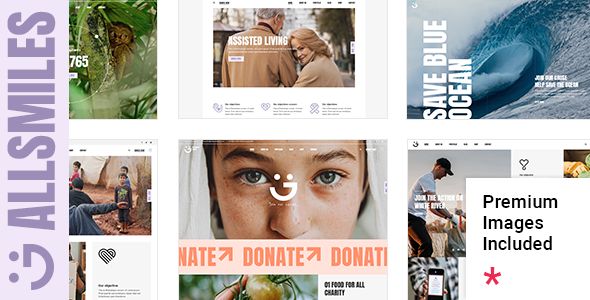Rally – Car Service & Motorcycle WordPress Theme

- Description
- Reviews
- FAQ

Rally – Car Service & Motorcycle WordPress Theme
Version advantages first. This package of Rally – Car Service & Motorcycle WordPress Theme is delivered in a license-free (under GPL) format that is ready to use after install, includes all Pro features, supports unlimited sites with a one-time purchase, and syncs with the official release cadence. In practical terms, you can launch a same-day service landing page for your auto shop, spin up a separate booking microsite for a detailing van, and clone a performance-tuning brand hub next quarter—without domain locks, activation servers, or renewal hurdles. Updates track upstream releases, so your design patterns and compatibility keep pace while you grow.
Product Overview
Rally is a conversion-minded WordPress theme purpose-built for automotive businesses: car repair shops, motorcycle garages, mobile mechanics, tire and wheel centers, body and paint studios, PPF/ceramic coating specialists, dyno and ECU tuners, car wash/detailing providers, and motorsport teams selling services or appointment slots. Every section is tuned for the fast decisions vehicle owners make: a clear “Book Service” button, a trust strip that names what you do, price transparency without fine-print traps, and an intake path that works flawlessly on a phone in the parking lot.
The design language is confident and mechanical without shouting—assertive headings, measured whitespace, gridded photo panels, and micro-interactions you can disable if you prefer a leaner feel. Templates cover the essentials out of the box: Services, Packages & Pricing, Booking/Appointment, Vehicle Brands, Diagnostics, Before/After Gallery, Technician Profiles, Reviews, Coupons & Seasonal Offers, Shop Locations, Blog/Guides, and Contact. Because all premium blocks are included, you are not fighting upsell walls; you can assemble high-converting pages in a few hours and refine later.
Who It’s For
-
Independent repair shops that need a straight line from problem → estimate → appointment.
-
Motorcycle garages & custom builders showcasing fabrication, paint, and performance packages with photo-rich case studies.
-
Detailing, PPF & ceramic coating pros selling packages with add-ons (headlight restore, interior steam, wheel coating).
-
Tire & alignment centers that need instant phone-friendly booking and bay capacity visibility.
-
Dyno, tuning & motorsport teams promoting ECU remaps, intake/exhaust kits, suspension setups, and track support.
-
Multi-location chains & franchise owners who want consistent branding with localized landing pages, hours, and reviews.
-
Mobile mechanics & wash vans booking routes with upfront pricing, travel radius, and quick-response CTAs.
Core Philosophy
-
Make the next step obvious: Every hero presents a single action (Book Service / Get a Quote / Call Now) with a secondary “See Pricing.”
-
Respect urgency: Short copy, clear inclusions, realistic ETAs, and honest service boundaries.
-
Trust by specifics: Show the actual checklist, brand certifications, torque specs where relevant, and manufacturer recommendations—no fluff.
-
Speed is UX: Predictable above-the-fold layout, pre-sized media, opt-in effects, and minimal script bloat.
-
Reuse beats rework: The same service card can live on Home, Services, and a Brand page without recoding.
Real-World Use Cases & Page Patterns
1) Repair & Maintenance Services
Create cards for Oil & Filters, Brakes, Suspension, Cooling, Electrical Diagnostics, Transmission Service, AC Recharge, State Inspection Prep. Each card includes: symptoms, what’s included, average time, add-ons (flush, premium fluid), and an “Is this urgent?” hint. Put a single “Book Now” button above the fold; repeat after the first paragraph for mobile scrollers.
2) Motorcycle-Specific Flows
Spin up program pages for Major Service (12k/24k), Valve Clearance, Chain & Sprockets, Tire Mount/Balance, Fork Rebuild, Dyno & Fuel Mapping. Include model fit notes (sport, ADV, cruiser), a brief tool list, and safety checks at delivery (torque values, safety wire, road test).
3) Detailing, PPF & Coatings
Use package bands: Express, Full, Correction + Ceramic, PPF Front / Full Body. Under each, show paint correction stages, panel coverage, warranty notes, curing time, and add-ons (glass coating, wheel faces). A before/after gallery with short captions (“1-step correction; 60–70% defect removal”) builds trust.
4) Tire, Alignment & Suspension
A clear Fitment & Alignment page: tire size guidance, rotation intervals, alignment types (standard / track / lift kit), torque specs for popular platforms, and a “Bring your own parts?” micro-policy. Add a quick calculator for staggered setups and a simple “We road-test every job” note.
5) Dyno & Performance Tuning
Create Stage 1/2/3 cards with hardware requirements and ECU notes. Put a “Baseline + Tune” package with an expected gain range and mandatory health checks (fuel, cooling, boost leak). Add a disclaimer that results vary by platform and condition—credibility > hype.
6) Fleet & B2B
A Fleet Maintenance page covering preventive schedules, night drop, consolidated billing, SLAs, and reporting frequency. Include common platforms (courier vans, pickups, police interceptors) and an onboarding path.
7) Seasonal & Campaign Landers
Build Winter Prep and Summer Road-Trip Check pages with short checklists (battery test, coolant, wipers, air, cabin filter) and an appointment block that defaults to next 72-hour slots.
Booking & Intake That Converts
-
Two-step appointment form: Step 1 (contact + vehicle) collects name, phone, email, plate/VIN optional; Step 2 chooses service, preferred date/time, and notes.
-
Smart defaults: Pre-fill common services, offer closest slots, and show a contact-option toggle (“Text me updates”).
-
Microcopy that calms: “Most oil services done in 45–60 minutes,” “Loaner available—ask us,” “We torque wheels by spec and re-check.”
-
Quote flow: For diagnostics, ask for the top symptom first, then a photo upload. Promise a response window (“We’ll confirm a bay within 30 minutes during business hours”).
-
Call fallback: Prominent phone with hours at the top. Not everyone wants forms—especially roadside.
Brand & Vehicle Pages That Matter
Rally includes a Vehicle Brands index so you can group services by manufacturer. A BMW page, for example, would show common intervals, oil spec grade, brake pad sensor notes, and cooling quirks; a Harley page might highlight torque values and service intervals; a Toyota page might feature timing chain vs. belt notes. The goal is to show competence quickly and reduce back-and-forth at the counter.
Visual System & Content Notes
-
Photography: Use honest shop photos—lift bays, torque wrenches, scan tools, tire machines, dyno pulls, foam cannon shots. Avoid staged stock unless necessary.
-
Typography: A sturdy display face for headings and a clean sans for body. Keep lines 60–75 characters and prefer short sentences.
-
Color: Primary (brand), Action (CTA), Support (badges), and a neutral surface. Good contrast helps outdoors glare.
-
Icons: Brake disc, wrench, battery, tire, shock, plug, helmet, speedometer. Use as signposts, not decorations.
-
Accessibility: Respect reduced-motion preferences, provide focus states and labels, and write alt text that actually explains (“Technician torquing wheels to 103 Nm”).
Installation & Setup
-
Environment & performance basics
Run a current WordPress/PHP, enable HTTPS, configure transactional email (so booking confirmations land), define image sizes, and ship WebP/AVIF where possible. Exclude form endpoints from full-page caching. -
Install the theme
Upload the Rally ZIP, activate, and run the starter import. You’ll get base pages: Home, Services, Packages, Booking, Brands, Gallery, Reviews, Locations, Blog, Contact. -
Global styles & tokens
Set brand colors, type pairs, and spacing. Tokens ensure consistent rhythm across dozens of pages without hand-tuning CSS each time. -
Homepage blueprint
Hero (Book Service) → trust chips (ASE certs, years, reviews) → services grid → packages band → booking teaser → gallery strip → testimonials → locations → final CTA. -
Service catalog
Create core services first. Each page: symptoms → what we do → how long it takes → what’s included/excluded → add-ons → booking CTA. -
Booking & confirmations
Keep Step 1 minimal. In confirmations, set expectations: drop-off, wait options, warranty, and follow-up. Offer a reschedule link and a “text me” toggle if you handle SMS. -
Locations
Duplicate a location template for each shop. Include address, hours, parking/turn-in notes, photos of the entrance, and nearby landmarks. -
Performance pass
Pre-size hero media, defer non-critical scripts, lazy-load galleries, and test on a mid-tier Android phone. Rally is light; keep it that way.
Pricing, Packages & Transparency
A three-band layout usually works:
-
Essential – common maintenance with clear “from” pricing and typical duration.
-
Plus – deeper services (flushes, multi-point inspections, brake service with rotors).
-
Performance/Pro – tuning, suspension, PPF/ceramic, track alignment.
Under the grid, add fine print that earns trust: shop supply policy, disposal fees, warranty terms, and how estimates work when diagnostics reveal additional parts. Transparency prevents awkward calls later.
Reviews, Proof & Community
Use short, credible quotes. “Solved an intermittent misfire in two hours after the dealership tried twice.” Pin a few before/after maintenance images and dyno charts with light captions. Add a Community band: track days you support, bikes & cars you’ve built, charity events, school partnerships. Real presence beats glossy claims.
Blog & Guides (That People Actually Read)
Write for real questions:
-
“How to know if your rotors need replacement vs. a pad slap.”
-
“Dyno day prep: fluids, tires, strap points, and expectations.”
-
“What ceramic coating protects—and what it doesn’t.”
-
“Chain care: when lube helps and when it hides wear.”
Keep posts structured: 5–7 short sections, one diagram or photo per screen, a tiny checklist, and a CTA at the end (Book Service / Ask a Tech).
Multi-Location & Franchise Playbook
Thanks to unlimited sites usage and update parity, a network owner can standardize Rally across regions:
-
A base child theme with brand tokens.
-
Location pages cloned and localized (hours, photos, maps, nearby highways).
-
Shared service templates with city-specific pricing and promos.
-
A simple monthly update window across all instances.
Maintenance & Update Rhythm
This package syncs with the official release. Adopt a simple routine:
-
Clone to staging → 2) Update theme and scan the changelog → 3) Visual QA (Home, Services, Booking, Location page) → 4) Deploy during off-hours → 5) Purge cache/CDN → 6) Test the booking form on mobile.
Keep overrides in Global Styles or a child theme, not in core files, so updates do not overwrite your work.
Operations, Safety & Policy Pages
-
Safety & Warranty: torque policy, re-torque window for wheels, brake bed-in notes, test drive procedure, warranty duration and exclusions.
-
Parts Policy: OEM vs. aftermarket options, bring-your-own parts rules, returns, and disposal.
-
Emergency & After-Hours: what you can and cannot do after closing, roadside notes, preferred tow partner.
-
Environmental: used oil, coolant, and tire disposal practices.
-
Privacy & Communication: how you handle customer contact data and SMS preferences.
Troubleshooting
-
Forms not submitting → Exclude booking endpoints from cache; ensure nonces are fresh; verify HTTPS is consistent; check reCAPTCHA or antispam tokens.
-
Layout shift on mobile → Define width/height on hero images; avoid auto-loading sliders; preload primary heading font.
-
Soft photos or jagged logos → Export at proper breakpoints, use SVG for logos, avoid double compression.
-
Duplicate analytics events → Consolidate to one tag manager; remove per-page legacy snippets.
-
Slow first paint → Compress hero, reduce above-the-fold JS, lazy-load below-the-fold galleries, and keep one hero per page.
-
Icon misalignment → Use inline SVG; normalize baselines; avoid raster icons inside buttons.
-
Translation gaps after update → Re-scan strings, re-sync catalogs, and keep identical slugs across languages.
Licensing Advantages (Plain-English Recap)
-
Unlimited sites: run a chain of shops, city microsites, and a tuning brand without extra activations.
-
One-time purchase: no per-domain renewals or seat juggling.
-
All Pro features included: premium blocks, booking layout patterns, package grids, galleries, and testimonials—no locked sections.
-
Syncs with the official release: compatibility and security improvements roll in on schedule.
-
Ready after install: activate and build; no serial servers or domain locks.
-
Agency-friendly: standardize a base build, then clone and localize quickly.
Launch Checklist
-
Set brand tokens (colors, type, spacing).
-
Publish Home, Services, Packages, Booking, one Location page.
-
Add 6–9 real photos (shop, lifts, detail bay, dyno, before/after).
-
Configure the two-step booking form + confirmations.
-
Write one flagship service page with a simple 3-step process and FAQ.
-
Replace all demo media and test mobile flows on a real phone.
-
Enable backups and schedule a monthly update window.
FAQ
1) Can I use Rally on unlimited sites?
Yes. The package is license-free under GPL and supports unlimited sites, ideal for multi-location chains, franchisees, or campaign landers.
2) Are all premium templates and blocks included?
Yes. You get service grids, package/pricing bands, booking layouts, brand/vehicle pages, galleries, testimonial carousels, locations, and more—all Pro features included.
3) Will I receive updates?
Yes. It syncs with the official release, so you inherit compatibility and security improvements without rebuilding your base.
4) Do I need activation to unlock features?
No. It’s ready to use after install—no domain locks or activation servers.
5) Is Rally good for motorcycle-only shops?
Absolutely. Build model-aware service pages (valve checks, chain/sprockets, fork service, dyno) and show before/after gallery work.
6) Can I sell packages with add-ons?
Yes. Use the package bands and add-on lists (e.g., ceramic wheel coating, interior steam, brake fluid flush). Keep pricing transparent with “from” labels when needed.
7) How do I set clear expectations for diagnostics?
Create a Diagnostics page with what’s included (scan, road test, smoke test if relevant) and note that further labor/parts depend on findings. Offer a response window for estimates.
8) Will updates overwrite my design tweaks?
Keep changes in a child theme or Global Styles. Test updates on staging before production.
9) Is it friendly for multi-location chains?
Yes. Duplicate the location template, localize hours/photos/reviews, and keep NAP consistent. Manage a single update cadence across all sites.
10) Can I promote dyno days or track events?
Yes. Use the event page with countdown, required gear checklist, waiver note, and a simple RSVP. Swap to a photo recap afterward.
11) How do I keep pages fast on mobile data?
Pre-size hero images, use WebP/AVIF, lazy-load below the fold, avoid heavy sliders, and minimize above-the-fold JavaScript.
12) Do you support galleries and before/after sliders?
Yes. Use the gallery block and optional before/after component; pair each image with brief, factual captions.
13) Can I show brand certifications and tools?
Yes. Add a modest strip for ASE/brand badges, alignment rack model, scan tools—keep it tasteful and secondary to service clarity.
14) Is translation supported?
Yes. Translate strings and mirror navigation in each language; re-sync catalogs after theme updates.
15) How should I present warranty and policies?
Create a Warranty & Policies page with torque/re-torque notes, parts options, returns, and environmental handling. Simple, readable, and linked from Booking.
16) What’s the best way to structure the homepage?
Hero CTA → trust chips → services grid → packages → booking teaser → gallery → testimonials → location strip → final CTA. Two swipes to a decision on mobile.
17) Can I accept walk-ins alongside bookings?
Yes. Add a “Walk-Ins Welcome” banner with current wait estimate or a quick “text us” note if you support messaging.
18) Can I run blogs without hurting speed?
Yes. Keep images optimized, avoid heavy embeds, and use a predictable H2 rhythm. Rally’s long-form spacing is tuned for real reading.
Q: Do I need a license key?
A: No. All products are Pre-Activated. You can use 100% of the Premium features immediately.
Q: Can I use the One-Click Demo Import?
A: Yes, absolutely! We ensure the demo import feature works perfectly.
Q: Can I use the products on multiple websites?
A: Absolutely. The GPL license allows use on unlimited domains.
Q: Are the files safe?
A: Yes. All files are scanned by McAfee and VirusTotal before uploading.
Share Now!


















